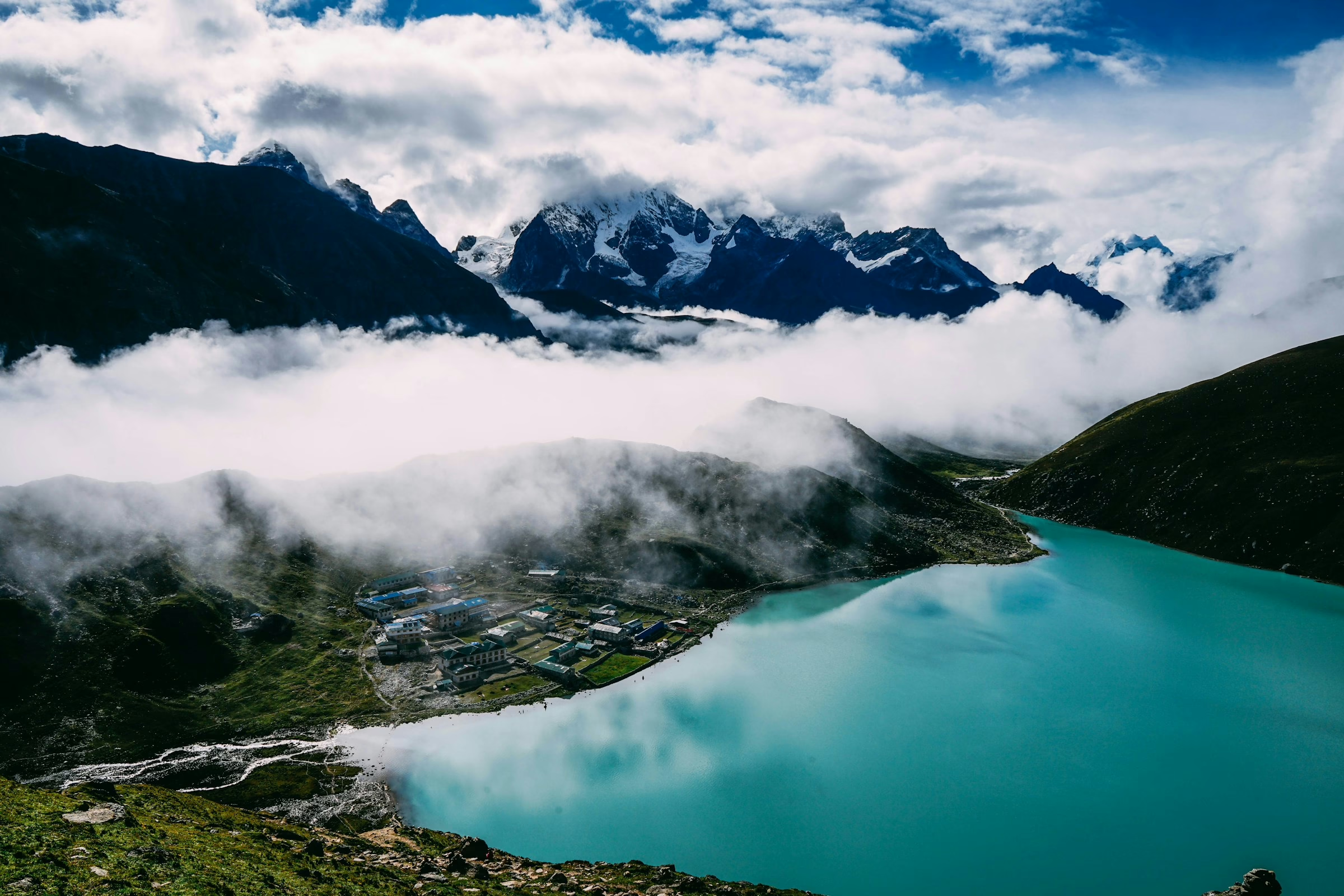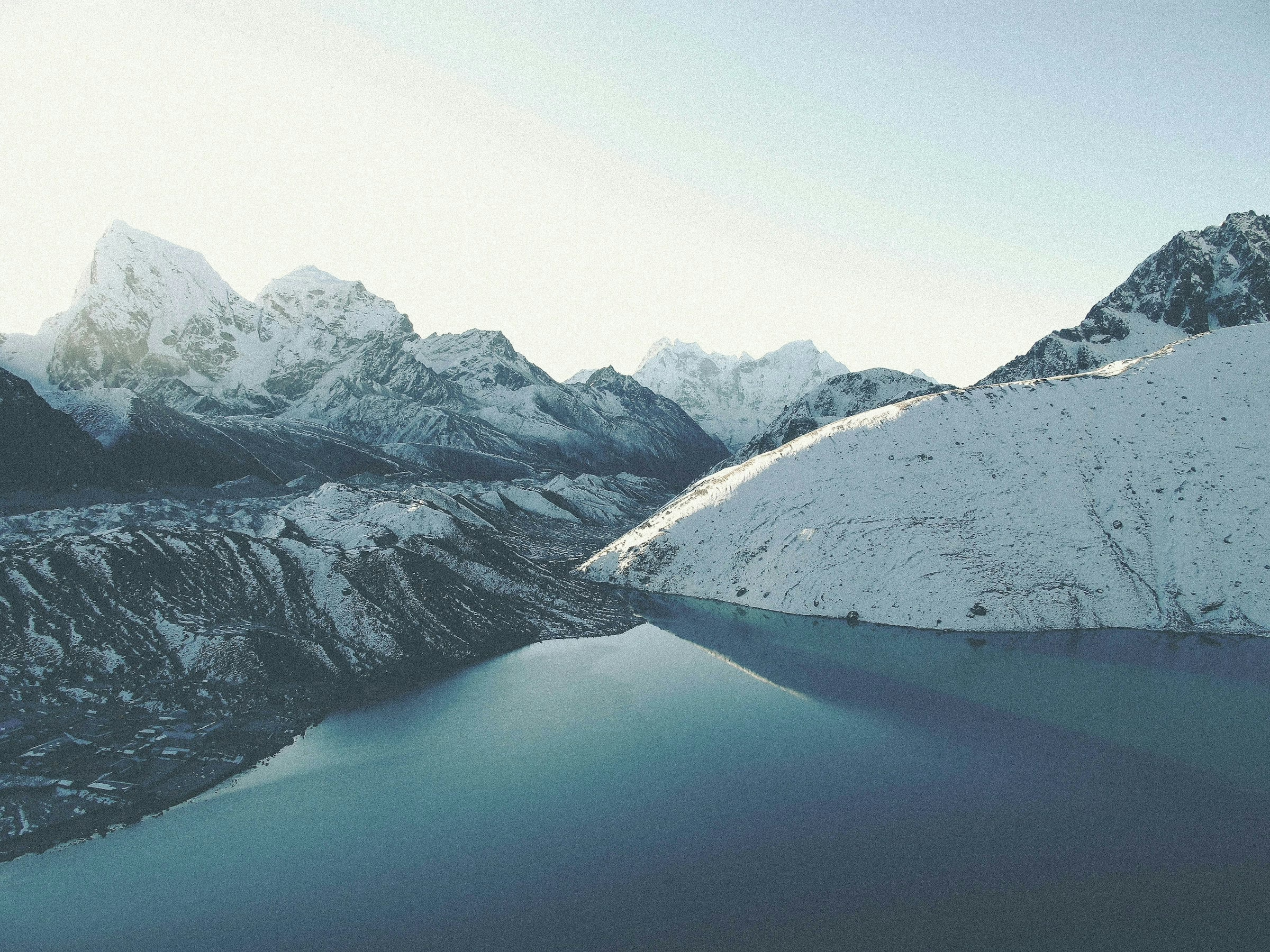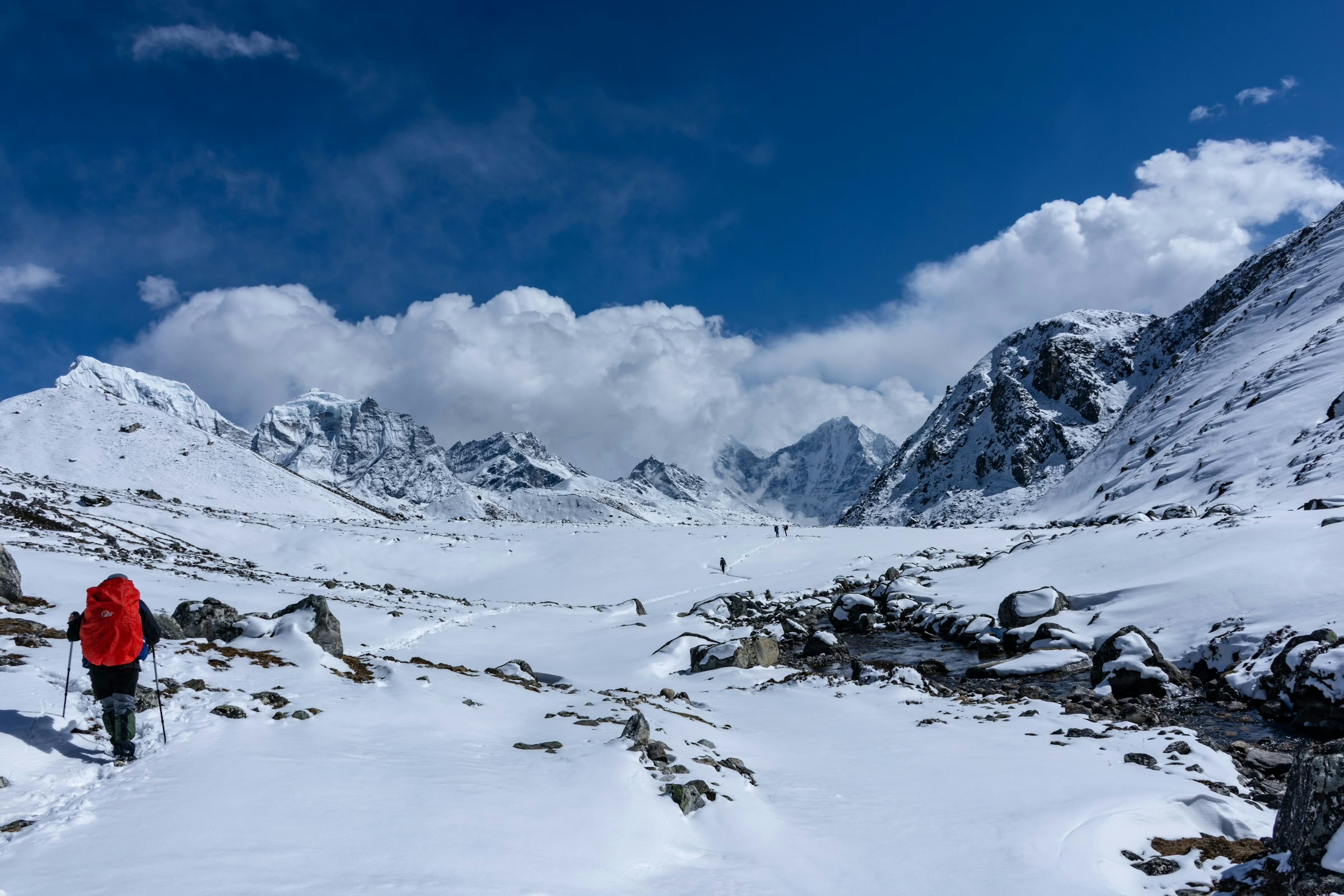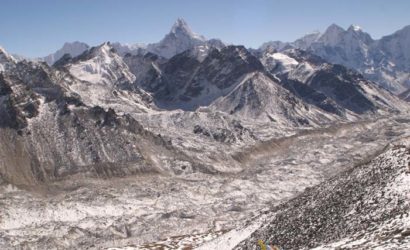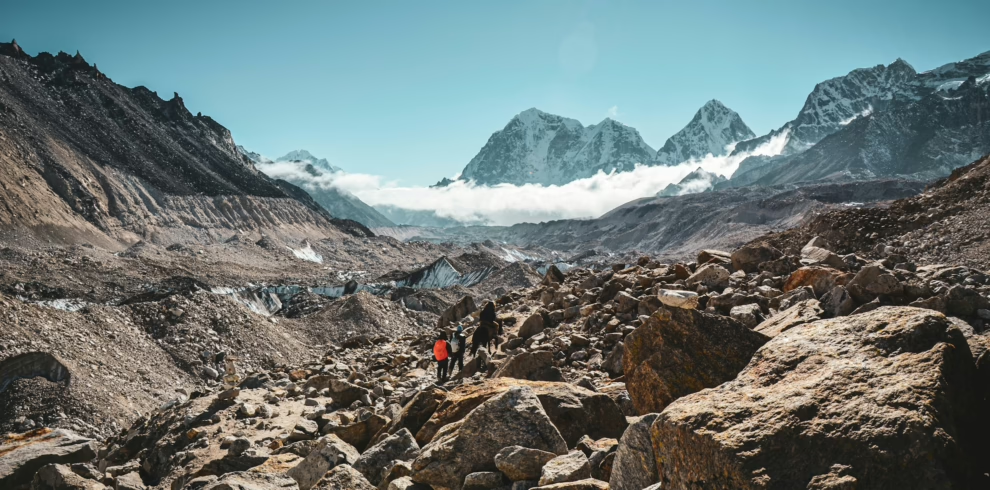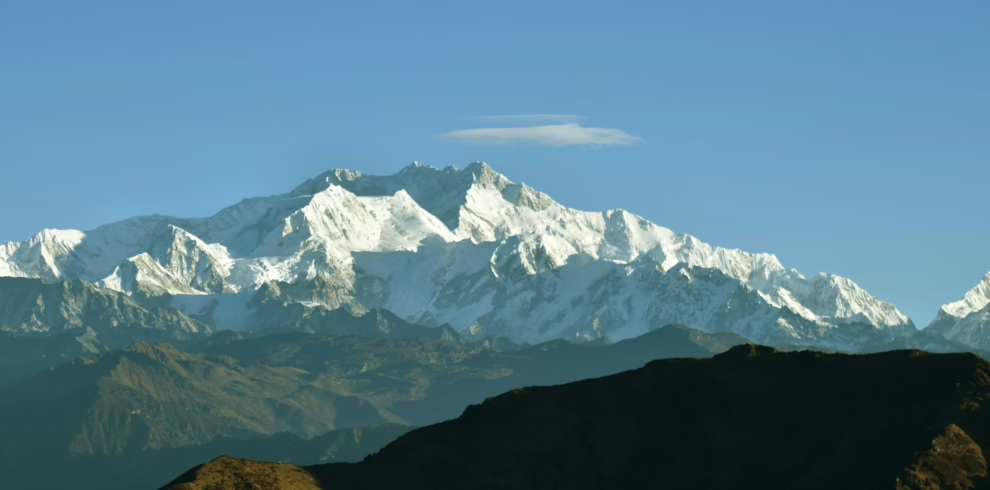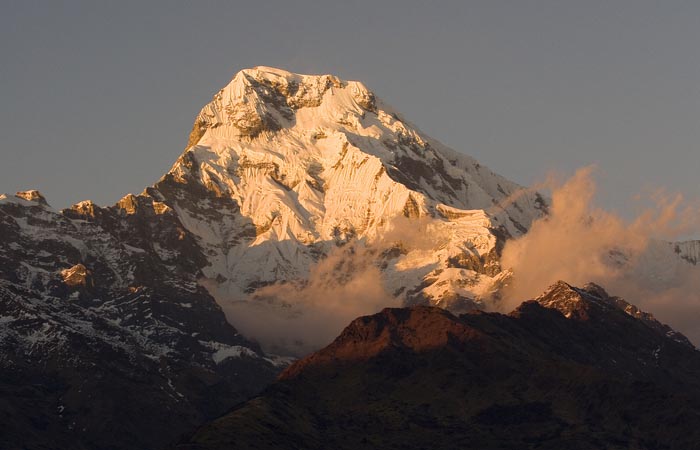For those craving a quieter, yet equally breathtaking alternative to the Everest Base Camp route, the Gokyo Valley Circuit Trek is an unforgettable adventure. This stunning trek combines jaw-dropping Himalayan views with a deep dive into the rich Sherpa culture.
The highlight? A climb to Gokyo Ri—a panoramic viewpoint offering some of the best vistas of Mt. Everest, even rivaling those from Kalapatthar. From here, you’ll take in a sweeping view of snow-capped peaks, shimmering turquoise lakes, and the vast Ngozumpa Glacier—the largest in the Himalayas.
Along the trail, you’ll explore peaceful Sherpa villages, ancient high-altitude monasteries, and serene alpine landscapes teeming with rare wildlife and colorful flora. The circuit also guides you past the iconic Gokyo Lakes, a sacred and visually striking set of glacial lakes that will leave you in awe.
Whether you’re drawn by the solitude, the scenery, or the spiritual atmosphere of the Himalayas, the Gokyo Valley Circuit Trek offers a perfect blend of natural beauty and cultural discovery—without the crowds.
Overview
The Gokyo Valley Trek offers stunning views of iconic Himalayan peaks, including Everest, Ama Dablam, Lhotse, Cho-Oyu, Pumori, and Thamserku. This scenic route also provides insight into the rich Sherpa culture, their grand monasteries, and the region’s diverse flora and fauna.
The journey begins with a 40-minute scenic flight to Lukla, followed by a short trek to Phakding. From there, you’ll continue to Namche Bazaar, the gateway to Mount Everest, where you’ll spend an extra day acclimatizing and exploring the local Sherpa lifestyle.
As you trek onward, you’ll enjoy spectacular morning views of Everest, Ama Dablam, Lhotse, Khumbila, and Thamserku. The trail leads through Dole and Machhermo, offering views of the impressive Ngozumpa Glacier—the second-largest in the world. From Machhermo, you’ll reach Gokyo Village, where the climb to Gokyo Ri rewards you with panoramic vistas of the Everest region.
After another day in Gokyo to acclimatize and enjoy the surrounding lakes and peaks, you’ll cross the Renjo La Pass—the highest point of the trek. From there, the descent takes you through Lumde, Taranga, and Thame, eventually returning to Namche. You’ll complete the trek by retracing your steps through Jorsale, Monjo, Phakding, and Chheplung before flying back to Kathmandu from Lukla.
Green Lotus Trekking, a trusted Kathmandu-based trekking company, offers a well-designed Gokyo Valley Circuit Trek itinerary with experienced guides. This adventure combines breathtaking mountain views with vibrant cultural experiences. Bookings for 2025 and 2026 are now open at competitive prices.
Benefits of Booking the Gokyo Valley Circuit Trek with Us
- Complimentary international airport pickup and drop-off
- Free Green Lotus Trekking duffle bag and T-shirt as souvenirs
- Detailed map of the Gokyo Valley Circuit Trek with Gokyo Ri
- Oximeter provided to monitor blood oxygen levels
- Access to essential medical kits
- Free luggage storage at the Green Lotus Trekking office during the trek
- Sleeping bags and down jackets available upon request
Preparation for Gokyo Valley Circuit Trek
Before starting the Gokyo Valley Circuit with Lakes, it’s essential to assess both your physical and mental readiness. If you’re new to trekking, begin training a few weeks or months in advance with regular cycling, running, or morning walks. Prior experience in hiking or climbing is a plus, especially for the challenging ascent to Renjo La Pass (5,360m), the trek’s highest point.
The route involves multiple ascents and descents through terraced fields and Sherpa villages, requiring good physical fitness to walk 5–6 hours daily. A positive attitude is equally important, as unexpected challenges can lead to stress or discomfort.
If you book with us, we strongly recommend consulting your doctor about your respiratory health before departure and sending us a copy of the report.
Useful Information for Gokyo Valley Circuit Trek
Best Time for Gokyo Valley Circuit Trek
Spring (March to May)
Spring is one of the best times to trek the Gokyo Valley. The weather is stable, with clear skies and minimal chance of rain or snow. Forests bloom with colorful flowers, and wildlife becomes more active, adding to the natural charm of the journey.
Autumn (September to November)
Autumn is another ideal season for this trek. The skies are crystal clear, offering stunning views of the Himalayas. The trails are dry and safe, with fewer risks of landslides or avalanches. This season also coincides with major Nepali festivals, giving trekkers a chance to experience local culture firsthand.
Meals During the Trek
You will be provided with three meals a day:
- Breakfast: Pancakes, porridge, local bread, chapatti, muesli, hash browns, and egg dishes (fried, scrambled, boiled, or omelet).
- Lunch & Dinner: Similar to breakfast items, with the addition of soups like tomato, mushroom, garlic, vegetable, and chicken.
- Drinks: Black tea, milk tea, lemon tea, ginger tea, mint tea, black coffee, and milk coffee.
Accommodation Facilities
- In Kathmandu: Shared rooms at a 3-star hotel (single rooms available upon request for an additional charge).
- During the Trek: Basic tea houses with twin beds and limited furniture. Most offer blankets (carrying a sleeping bag is recommended). Bathrooms usually have either sit-down or squat toilets. Hot showers are available for an extra fee.
Trek Difficulty
The Gokyo Valley Circuit Trek is moderately challenging. Trekkers should be prepared to walk 5–6 hours daily on rugged, steep terrain. Good physical and mental fitness is essential. The trail reaches elevations over 4,000 meters, increasing the risk of altitude sickness. First-time trekkers may find the terrain tough, including rocky paths, narrow cliffs, meadows, and valleys.
Travel Insurance Requirement
Travel insurance is mandatory and must include coverage for medical emergencies and helicopter evacuation up to 6,000 meters. A copy of your insurance certificate must be submitted within a week of booking. This allows us to plan effective emergency rescues if needed.
Altitude Sickness and Prevention
Altitude sickness can occur above 3,000 meters due to reduced oxygen levels. Symptoms include headaches, fatigue, nausea, dizziness, shortness of breath, and loss of appetite.
Tips for Prevention:
- Stay hydrated and avoid alcohol
- Eat nutritious meals
- Carry and use Diamox if needed
- Ascend slowly and acclimatize properly
- Descend immediately if symptoms worsen
- Maintain personal hygiene
Packing List Essentials
- Sunglasses, sun hat, woolen cap or balaclava
- Inner and outer gloves
- Towel, sandals, toiletries
- Daypack (30L) with rain cover
- Trekking and waterproof pants
- T-shirts, thermal wear, fleece jacket
- Down and windproof jacket
- Headlamp, power bank, extra batteries
- Sunscreen, wet wipes, hand sanitizer
- Socks, underwear, sleeping bag liner
- Water bottles and purification tablets
Trek Safety Measures
- Experienced guides trained in wilderness first aid
- Regular safety checks on food and lodging
- Leaders monitor trekkers’ well-being and manage altitude issues
- Comprehensive first aid kits provided
- Right to alter or cancel the trek in case of health concerns
Booking Procedure
Green Lotus Trekking, a government-licensed tour operator, has over a decade of experience. We are members of NMA and TAAN, ensuring reliability and safety.
To book your trek:
- Pay a 10% deposit of the total cost
- Send us copies of your passport, passport-size photo, travel insurance, and flight details within a week
- Payment options: bank transfer, Western Union, online portal, or in-person via cash, bank, or credit card
We will provide detailed payment instructions upon booking.
Highlights
- Scenic round-trip flight between Kathmandu and Lukla
- Cross Renjo La Pass (5,360m) for stunning Himalayan views
- Discover Gokyo Valley’s five frozen lakes and the panoramic viewpoint of Gokyo Ri
- Experience an exciting and challenging Gokyo Valley Circuit Trek
- Enjoy 360° views from Gokyo Ri, including Cho Oyu, Everest, Lhotse, Makalu, Cholatse, Taboche, and the Ngozumpa Glacier
- Spot yaks and mountain goats grazing on alpine slopes
- Immerse yourself in Sherpa culture and traditions
- Explore prayer wheels, colorful prayer flags, Mani stones, and impressive suspension bridges
- Encounter diverse wildlife such as musk deer, colorful pheasants, snow leopards, and Himalayan Thar
- Marvel at iconic peaks including Ama Dablam, Everest, Lhotse, Nuptse, and Pumori
- Trek through breathtaking valleys, vibrant rhododendron forests, waterfalls, springs, and lush mountain landscapes

